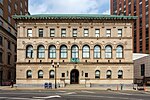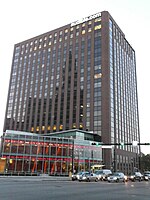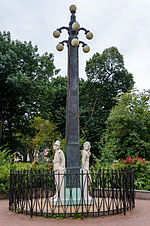American Insurance Company Building
Apartment buildings in Newark, New JerseyCommercial buildings on the National Register of Historic Places in New JerseyHistoric district contributing properties in Newark, New JerseyInsurance company headquarters in the United StatesNRHP infobox with nocat ... and 7 more
National Register of Historic Places in Newark, New JerseyNeoclassical architecture in New JerseyNew Jersey Register of Historic PlacesOffice buildings completed in 1930Residential skyscrapers in Newark, New JerseyRutgers University buildingsSkyscraper office buildings in Newark, New Jersey

The American Insurance Company Building is one of the oldest and tallest skyscrapers in Newark, Essex County, New Jersey, United States. Located at 15 Washington Street on Washington Park it was once headquarters for the American Insurance Company and is now part of Rutgers University. The neo-classical tower is a contributing property to the James Street Commons Historic District which also encompasses Washington Park, Newark Museum, and Newark Public Library. It re-opened in November 2015 as student dorms, event space, and chancellor's apartment.
Excerpt from the Wikipedia article American Insurance Company Building (License: CC BY-SA 3.0, Authors, Images).American Insurance Company Building
Washington Street, Newark
Geographical coordinates (GPS) Address Website Nearby Places Show on map
Geographical coordinates (GPS)
| Latitude | Longitude |
|---|---|
| N 40.74459 ° | E -74.17067 ° |
Address
Newark Public Library
Washington Street 5
07101 Newark
New Jersey, United States
Open on Google Maps










